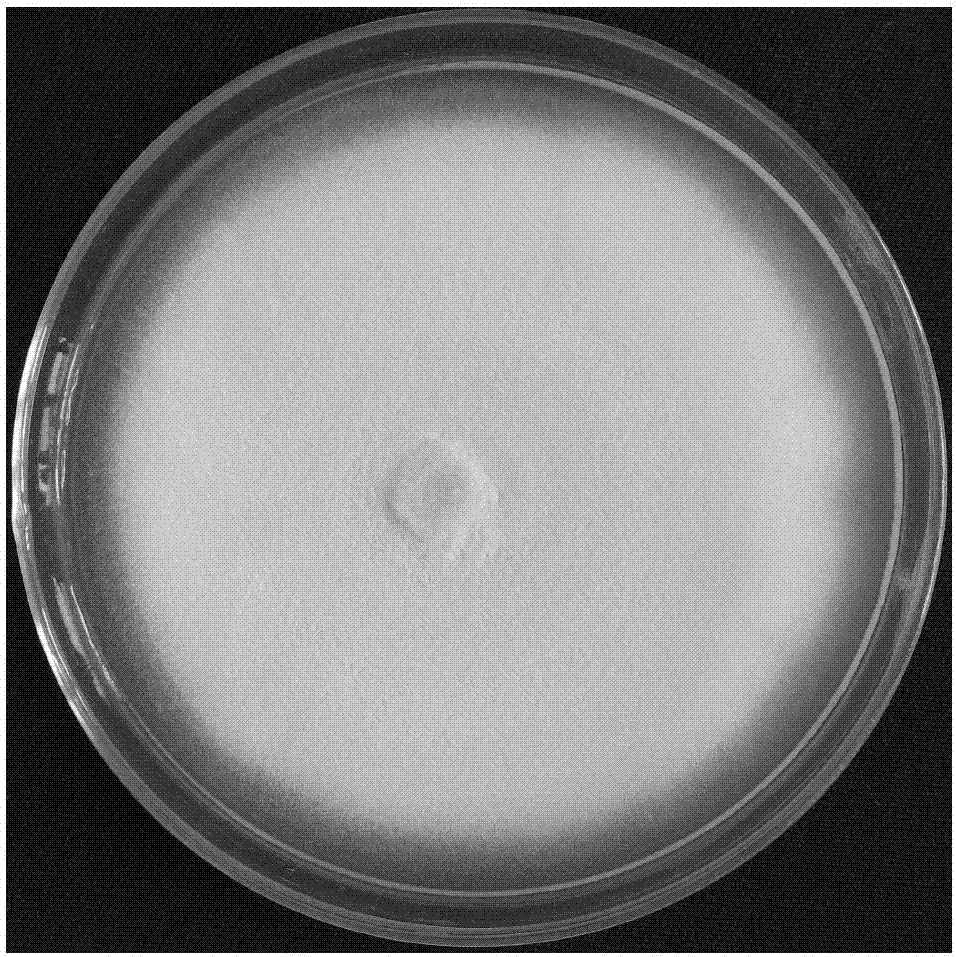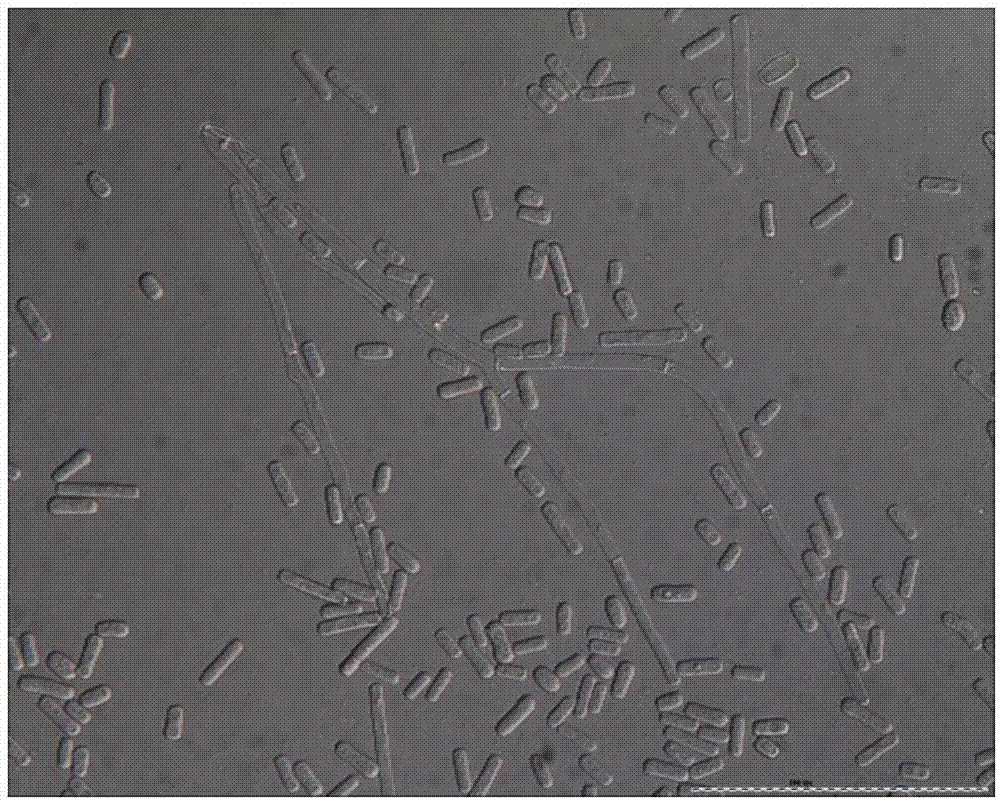CM1 (Galactomyces candidum) capable of degrading cephalosporin antibiotics and application thereof
A technology of cephalosporins and antibiotics, applied in the field of microorganisms, can solve problems such as scarcity of degrading strains
- Summary
- Abstract
- Description
- Claims
- Application Information
AI Technical Summary
Problems solved by technology
Method used
Image
Examples
Embodiment 1
[0024] 1. Screening of cephalosporin antibiotic degrading strain CM1
[0025] 1. Material preparation
[0026] The source of bacteria samples: fresh bacteria residues from an antibiotic manufacturer.
[0027] Potato dextrose medium (PDA): 200g potatoes, 20g glucose, 1L distilled water, natural pH, sterilized at 115°C for 30min. Add 10-15g of agar to the solid medium.
[0028] Martin's Medium: KH 2 PO 4 1.0g, MgSO 4 7H 2 O 0.5g, glucose 10.0g, peptone 5.0g, distilled water 1L, pH natural, sterilized at 115°C for 15min. Add 10g-15g of agar to the solid medium.
[0029] Inorganic salt medium: (NH 4 ) 2 NO 4 1.0g, K 2 HPO 4 0.5g, KH 2 PO 4 0.5g, MgSO 4 ·7H 2 O 0.5g, NaCl 0.2g, CaCl 2 0.1g, MnSO 4 h 2 O 0.01g, FeSO 4 ·7H 2 O 0.01g, distilled water 1L, pH7.0, sterilize at 121℃ for 15-20min. Add 10g-15g of agar to the solid medium.
[0030] Medium No. Ⅱ: beef extract 1.5g, peptone 6.0g, yeast extract powder 6.0g, glucose 1.0g, water 1L, sterilized at 115°C...
Embodiment 2
[0064] Growth and degradation characteristics of strain CM1
[0065] 1. Growth of strain CM1
[0066] 1. Growth of strain CM1 on different media
[0067] It has been found through experiments that the strain CM1 can grow in various media, such as Martin's medium, potato medium, Chase medium, and inorganic salt medium. Fast growing and easy to cultivate. Streak the strain CM1 on the potato solid medium, and culture it at room temperature (20°C-37°C) for 5d-10d, the strain CM1 can cover a 9cm plate, and its growth curve is shown in Figure 4 .
[0068] 2. Growth experiment of strain CM1 on medium with different concentrations of cephalosporin antibiotics
[0069] Strain CM1 can grow well in the medium with cephalosporin antibiotics as the only carbon source. Prepare cephradine, cephalexin, and cefuroxime sodium as the sole carbon source and the concentrations of the three cephalosporin antibiotics are 50mg / L, 100mg / L, 500mg / L, 1000mg / L, 5000mg / L, and 10000mg / L respectively....
PUM
 Login to View More
Login to View More Abstract
Description
Claims
Application Information
 Login to View More
Login to View More - R&D
- Intellectual Property
- Life Sciences
- Materials
- Tech Scout
- Unparalleled Data Quality
- Higher Quality Content
- 60% Fewer Hallucinations
Browse by: Latest US Patents, China's latest patents, Technical Efficacy Thesaurus, Application Domain, Technology Topic, Popular Technical Reports.
© 2025 PatSnap. All rights reserved.Legal|Privacy policy|Modern Slavery Act Transparency Statement|Sitemap|About US| Contact US: help@patsnap.com



